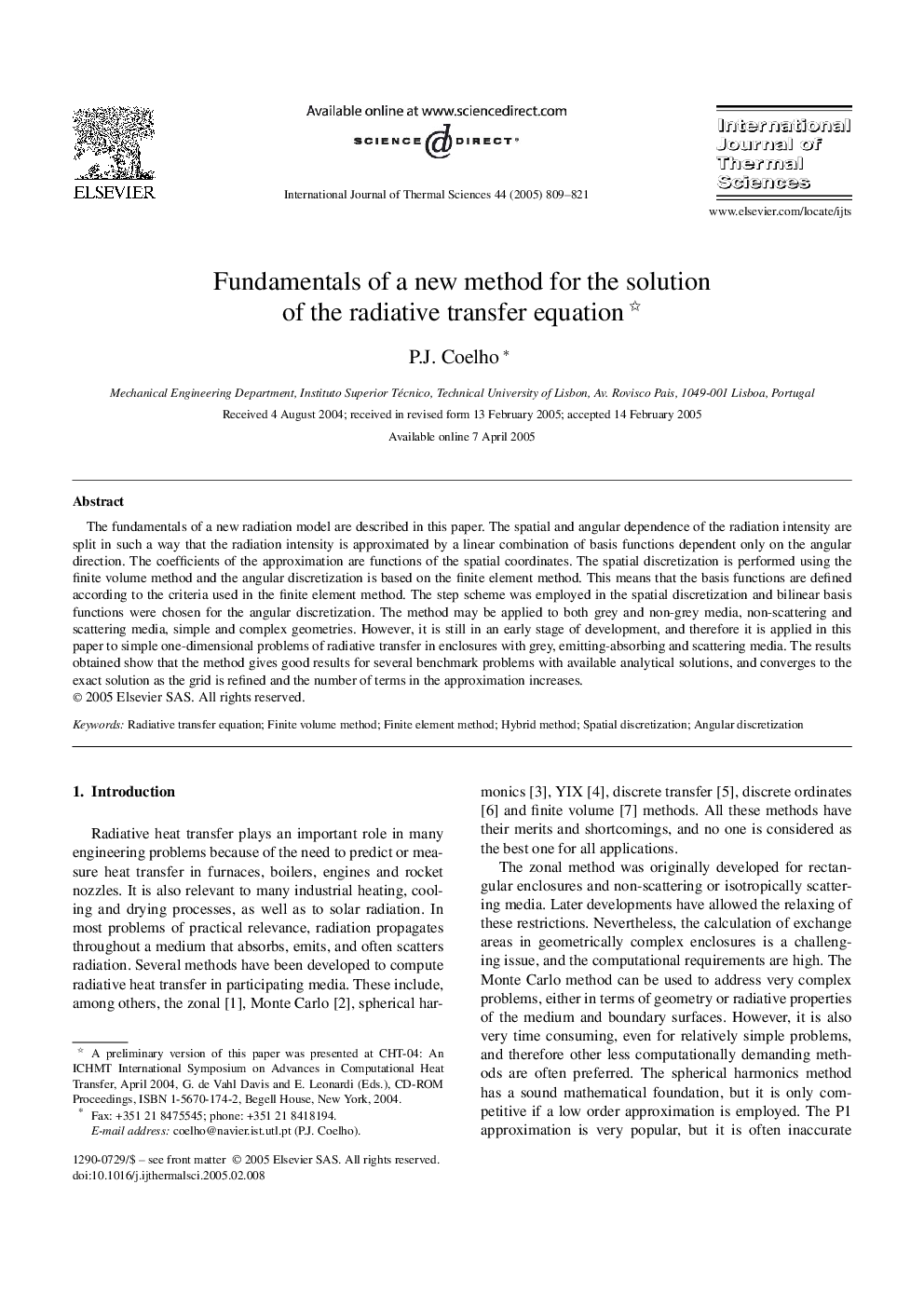| Article ID | Journal | Published Year | Pages | File Type |
|---|---|---|---|---|
| 9692832 | International Journal of Thermal Sciences | 2005 | 13 Pages |
Abstract
The fundamentals of a new radiation model are described in this paper. The spatial and angular dependence of the radiation intensity are split in such a way that the radiation intensity is approximated by a linear combination of basis functions dependent only on the angular direction. The coefficients of the approximation are functions of the spatial coordinates. The spatial discretization is performed using the finite volume method and the angular discretization is based on the finite element method. This means that the basis functions are defined according to the criteria used in the finite element method. The step scheme was employed in the spatial discretization and bilinear basis functions were chosen for the angular discretization. The method may be applied to both grey and non-grey media, non-scattering and scattering media, simple and complex geometries. However, it is still in an early stage of development, and therefore it is applied in this paper to simple one-dimensional problems of radiative transfer in enclosures with grey, emitting-absorbing and scattering media. The results obtained show that the method gives good results for several benchmark problems with available analytical solutions, and converges to the exact solution as the grid is refined and the number of terms in the approximation increases.
Keywords
Related Topics
Physical Sciences and Engineering
Chemical Engineering
Fluid Flow and Transfer Processes
Authors
P.J. Coelho,
